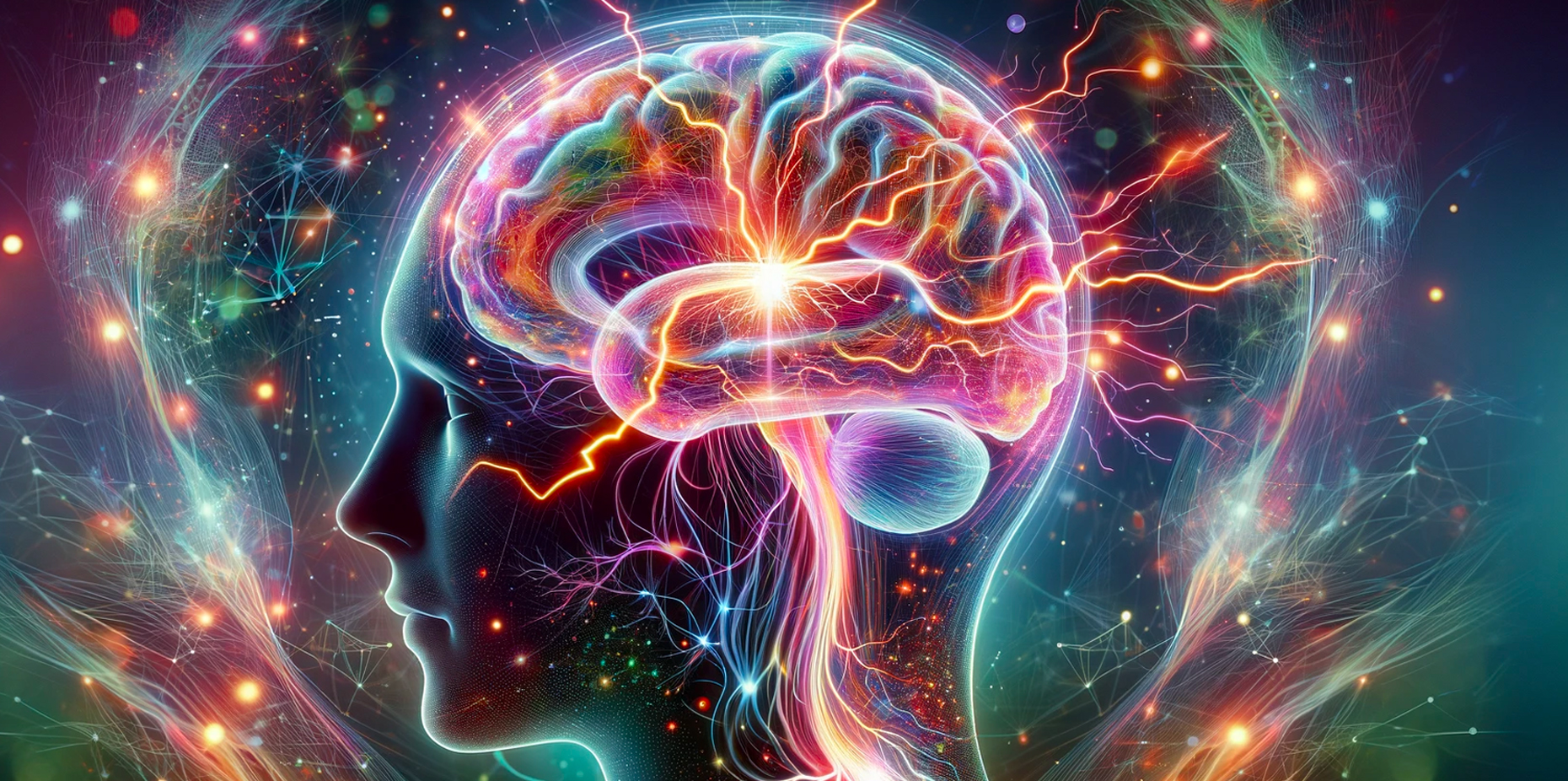Alzheimer’s disease impacts millions of individuals globally (1). It’s particularly common among older populations, with approximately one in 10 individuals aged 65 or above experiencing its effects (2). In addition, nearly a third of those aged 85 or older are affected by this condition (3).
Table of Contents
What is Alzheimer’s Disease?
Alzheimer’s Disease is a progressive brain condition that worsens with time (4). It involves alterations in the brain leading to the buildup of specific proteins. Consequently, the brain experiences shrinkage, and its cells gradually deteriorate. This disease stands as the primary cause of dementia—a gradual decline in memory, cognition, behavior, and social abilities—which significantly impairs daily functioning (5).
Unfortunately, there isn’t a cure for Alzheimer’s Disease (6). Initially, individuals may notice signs such as forgetting recent events or conversations, which eventually escalate to significant memory impairments and the inability to carry out routine tasks. In advanced stages, profound cognitive decline may result in complications like dehydration, malnutrition, or infections, ultimately leading to fatality (7).
While there’s no definitive cure, certain medications may alleviate symptoms or slow down the disease’s progression (8). Moreover, various programs and services exist to provide support for both individuals with Alzheimer’s and their caregivers, assisting them in managing the challenges associated with the condition (9).
Stages of Alzheimer’s Disease
Alzheimer’s disease advances through various stages, though the pace and manifestation may differ for each individual (10). These stages provide insight for healthcare providers and families to tailor care accordingly.
- Stage 1: Preclinical Changes. Alzheimer’s typically begins with silent brain alterations years before symptoms emerge. Detection at this stage relies on specialized imaging like PET scans. As the disease progresses through subsequent stages, cognitive changes become more apparent (11).
- Stage 2: Very Mild Changes. Early signs may be subtle, often unnoticed even by physicians. These could involve minor memory lapses or misplacing items. Functionality remains largely unaffected, with these symptoms potentially attributed to normal aging (12).
- Stage 3: Mild Decline. Observable cognitive shifts emerge (13), such as repetitive questioning or difficulty in planning. Providing support with tasks like bill payments becomes essential, along with encouraging stress reduction and organizational strategies.
- Stage 4: Moderate Decline. Significant cognitive impairment becomes evident, including forgetfulness about personal details and challenges in daily activities like cooking or using the phone. Caregivers play a crucial role in ensuring safety and assisting with tasks.
- Stage 5: Moderately Severe Decline. Memory lapses extend to forgetting addresses or dressing appropriately. Caregivers may aid independence by simplifying routines and offering reassurance during repetitive inquiries.
- Stage 6: Severe Decline. Recognition of faces may persist, but confusion regarding identities and delusions may arise. Caregivers provide support with basic needs like eating and dressing, while sensory activities like music or storytelling may enhance connection.
- Stage 7: Very Severe Decline. Fundamental abilities like eating and mobility decline significantly, requiring extensive caregiver assistance. Hospice care may be considered for comfort and support, acknowledging the terminal nature of late-stage Alzheimer’s.
Embracing a holistic approach, hospice care prioritizes comfort, pain management, and emotional support, whether provided at home or in a specialized facility.
Symptoms of Alzheimer’s Disease
In its early stages, individuals may struggle to recall recent events or conversations. However, as the disease advances, memory problems intensify, accompanied by various other symptoms.
One of the initial signs of Alzheimer’s is the individual’s own recognition of difficulties in memory and thinking clearly. As the condition progresses, these issues become more apparent to family members or friends. The underlying brain changes associated with Alzheimer’s lead to a range of challenges, affecting different aspects of daily life:
- Memory: While everyone experiences occasional memory lapses, Alzheimer’s-related memory loss persists and worsens over time. This might significantly impact one’s ability to function effectively at work or home (14). Individuals with Alzheimer’s may repeat statements or questions, forget appointments, misplace items, or even become disoriented in familiar places. Eventually, they may struggle to remember the names of loved ones or common objects and encounter difficulty in expressing thoughts or engaging in conversations (15).
- Decision Making: Alzheimer’s impairs the ability to make decisions in everyday situations (16). This might manifest as poor social choices, inappropriate clothing selection for the weather, or difficulty in problem-solving, such as handling kitchen accidents or making decisions while driving.
- Thinking and reasoning: Alzheimer’s disease interferes with cognitive functions such as concentration and abstract thinking. Tasks requiring multitasking or handling numbers become increasingly difficult. Managing finances or making decisions based on abstract concepts becomes challenging, eventually leading to an inability to recognize or manage numbers effectively (17).
- Personality and behavior changes: Alzheimer’s-related brain changes may significantly alter mood and behavior (18). Individuals may experience depression, social withdrawal, mood swings, distrust, aggression, or changes in sleeping patterns. Some may exhibit wandering tendencies or develop delusions (19).
- Planning and performing tasks: Routine activities that involve sequential steps become hard for individuals with Alzheimer’s. Simple tasks like meal preparation or playing games may become overwhelming, and as the disease progresses, even basic activities like dressing or bathing may be forgotten (20).
- Preserved skills: Despite the decline in memory and cognitive abilities, individuals with Alzheimer’s might retain certain skills for an extended period (21). These may include reading, storytelling, singing, crafting, or engaging in other creative activities. These skills persist because they are controlled by brain regions affected later in the disease’s progression
Understanding the symptoms and progression of Alzheimer’s disease is crucial for both individuals diagnosed and their caregivers. Early recognition and appropriate management strategies might significantly improve quality of life for those affected by this condition.
Causes of and Risk Factors of Alzheimer’s Disease
Alzheimer’s disease remains a complex puzzle for medical researchers. However, at its core, this disease disrupts normal brain function due to the malfunctioning of certain proteins (22). This disruption sets off a chain reaction, leading to the deterioration and eventual death of brain cells, known as neurons.
In rare cases, specific genetic mutations are implicated, almost ensuring the onset of Alzheimer’s, typically beginning in midlife (23). Researchers are primarily focused on two key proteins believed to play pivotal roles:
- Plaques: Fragments of beta-amyloid protein clump together, forming toxic clusters that impede neuronal function and communication, ultimately forming amyloid plaques (24).
- Tangles: Tau proteins, crucial for maintaining a neuron’s internal support and nutrient transport system, undergo structural changes, forming neurofibrillary tangles that disrupt cellular function (25).
While the precise triggers for Alzheimer’s remain unknown, certain risk factors have been identified:
- Genetics: Individuals with a first-degree relative affected by Alzheimer’s face a slightly elevated risk, with specific genetic variations, like the APOE e4 gene, further increasing susceptibility (26).
- Age: Advancing age is the single most significant risk factor, with the likelihood of developing Alzheimer’s increasing with each passing year (27).
- Mild Cognitive Impairment (MCI): MCI, characterized by mild declines in cognitive function, poses an increased risk of progressing to Alzheimer’s-related dementia (28).
- Head Trauma: Older individuals with a history of brain injury face heightened dementia and Alzheimer’s risk, particularly in cases of severe or multiple injuries (29).
- Air Pollution: Studies suggest a link between exposure to air pollution and increased Alzheimer’s risk, highlighting the importance of environmental factors (30).
- Excessive Alcohol Consumption: Chronic alcohol abuse is associated with early-onset Alzheimer’s, underscoring the importance of moderation in alcohol consumption (31).
- Poor Sleep Patterns: Disrupted sleep patterns have been linked to an elevated risk of Alzheimer’s disease, emphasizing the significance of quality sleep for brain health (32).
- Lifestyle and Heart Health: Factors such as lack of exercise, obesity, smoking, high blood pressure, high cholesterol, and poorly controlled type 2 diabetes are all modifiable risk factors that may influence Alzheimer’s susceptibility (33).
- Down Syndrome: Those with Down syndrome, due to an extra copy of chromosome 21, are predisposed to Alzheimer’s, often experiencing symptoms earlier than the general population (34).
By promoting brain health through healthy habits and social engagement, we can strive to reduce the burden of Alzheimer’s disease in our communities.
Diagnosis of Alzheimer’s Disease
When it comes to identifying Alzheimer’s disease in individuals experiencing memory issues, healthcare professionals employ various methods. This is crucial as numerous other conditions, particularly neurological ones, may manifest similar symptoms to Alzheimer’s.
At the onset of an Alzheimer’s diagnosis, your healthcare provider will engage in discussions to gain insight into your overall health and daily activities. They may also seek input from close individuals like family members or caregivers to better understand your symptoms. Key areas of inquiry typically include:
- General health status
- Medical history
- Current medications
- Changes in behavior, mood, and personality
- Ability to perform daily tasks
Additionally, your provider will:
- Conduct a physical and neurological examination
- Order routine medical tests like blood and urine analyses
- Administer a mental status assessment encompassing memory, problem-solving, attention, basic math, and language tasks
- Recommend brain imaging tests such as CT scans, MRIs, or positron emission tomography (PET) scans to either confirm an Alzheimer’s diagnosis or rule out alternative conditions.
It’s important to remember that receiving a diagnosis of Alzheimer’s disease may be challenging for both the individual and their loved ones. However, early detection and understanding of the condition might help in managing symptoms and accessing appropriate support and resources.
Treatment Options for Alzheimer’s Disease
Alzheimer’s disease doesn’t currently have a cure, but there are medications available that might temporarily slow down the progression of dementia symptoms (35).
Initiating treatment as early as possible after diagnosis may assist in preserving daily functioning for a longer period. However, it’s important to note that existing medications cannot halt or reverse the course of Alzheimer’s disease (36).
Cholinesterase Inhibitors
For individuals with mild to moderate Alzheimer’s disease, certain medications known as cholinesterase inhibitors may be beneficial. These include:
- Donepezil (Aricept®)
- Galantamine (Razadyne®).
- Rivastigmine (Exelon®).
How They Work: These drugs function by inhibiting the action of acetylcholinesterase, an enzyme responsible for breaking down acetylcholine (37).
Acetylcholine plays a crucial role in facilitating communication among nerve cells (38). It’s believed that diminished levels of acetylcholine contribute to some of the symptoms experienced in Alzheimer’s disease.
Benefits: Cholinesterase inhibitors have been shown to improve certain memory issues and alleviate some behavioral symptoms associated with Alzheimer’s disease (39). However, it’s essential to note that these medications do not cure the condition or halt its progression.
NMDA Antagonists
Understanding the available treatment options is crucial for managing the symptoms and improving the quality of life for patients.
- Memantine (Namenda®)
- Managing Behavioral Symptoms
- Anti-anxiety drugs
- Anticonvulsant drugs
- Antidepressants
- Antipsychotics (neuroleptics)
However, it’s important to note that these medications may come with side effects, such as dizziness, which could increase the risk of falls (36). Healthcare providers often reserve their use for severe behavioral problems or after exploring safer non-drug therapies.
Understanding and navigating treatment options for Alzheimer’s disease might be overwhelming, but with the right support and information, individuals and their loved ones may make informed decisions to enhance their quality of life.
Let’s continue to advocate for better understanding, support, and research for those affected by Alzheimer’s disease.
Managing Alzheimer’s Disease
With the right approach and support, it is possible to enhance the quality of life for those affected with Alzheimer’s. Here are some practical strategies for managing Alzheimer’s disease, focusing on maintaining safety, independence, and social engagement:
- Establish Daily Routines: Consistency and familiarity may offer comfort and stability for someone with Alzheimer’s. Establishing a daily routine might help reduce confusion and anxiety, providing a sense of predictability in their day-to-day life (40).
- Explore Local Dementia Services: Take advantage of local resources such as support groups, day centers, and memory cafés. These services provide valuable opportunities for social interaction and support, both for individuals with Alzheimer’s and their caregivers (41).
- Carry Identification: Ensure the individual carries identification containing details of their diagnosis, especially when venturing outside the home. This simple precaution may be invaluable in case they become lost or require assistance. Consider sewing this information discreetly into their clothing or bag for easy access.
- Foster Social Connections: Encourage the person with Alzheimer’s to stay engaged in activities they enjoy or explore new ones. Social interaction is essential for mental stimulation and emotional well-being. Whether it’s participating in hobbies, attending community events, or spending time with loved ones, maintaining social connections might enrich their life (42).
- Request Assessments: Seek Needs Assessments for individuals with dementia and Carer’s Assessments for their caregivers. These assessments may help determine the necessary equipment, services, and support available to address specific needs and challenges (43).
- Encourage Engagement: Support the person with Alzheimer’s in continuing with their daily activities to the best of their ability. Engaging in familiar tasks and hobbies may help maintain cognitive function and preserve skills for as long as possible (44).
- Assess Home Safety: Conduct a thorough assessment of the person’s living environment to identify and address potential hazards. Simple modifications, such as installing grab bars or removing tripping hazards, might significantly enhance safety and comfort within the home (45).
- Consider Care Options: Be realistic about the caregiving capacity, particularly as Alzheimer’s progresses. In the middle to late stages of the disease, it may become necessary to enlist the assistance of paid caregivers or consider transitioning to a care facility to ensure optimal care and safety (46).
Caring for someone with Alzheimer’s disease requires patience, compassion, and resilience. Remember, you are not alone on this journey. By implementing these practical strategies and accessing available support services, you may navigate the challenges of Alzheimer’s disease while prioritizing the well-being and dignity of your loved one.
Preventing Alzheimer’s Disease
Alzheimer’s disease, though influenced by factors beyond our control like age and genetics, might also be mitigated through lifestyle choices.
Research underscores the importance of adopting a healthy lifestyle to safeguard against cognitive decline. Here are some simple strategies that may aid in reducing the risk of developing Alzheimer’s:
- Keep Mentally Active: Engage in activities that stimulate the brain such as playing board games, reading, solving puzzles, or learning a musical instrument.
- Maintain Social Connections: Regular social interactions, whether with friends, family, or community groups, may contribute to cognitive well-being.
- Stay Physically Active: Regular exercise enhances blood flow and oxygen supply to the brain, promoting brain cell health. Remember to use protective headgear during activities with a risk of head injury.
- Eat a Balanced Diet: Consider adopting diets rich in antioxidants such as the Mediterranean or DASH diet. Enjoy alcoholic beverages in moderation, if at all.
Don’t hesitate to discuss any concerns about Alzheimer’s disease with your healthcare provider. Remember, taking proactive steps towards a healthy lifestyle might make a difference.
Conclusion
Discovering that a family member has Alzheimer’s disease might feel daunting. However, rest assured that their medical team is there to support both them and you every step of the way, offering personalized care options. Remember to prioritize your own well-being too. Engaging in support groups or building your own network of support can be invaluable during this challenging time.
In times like these, it’s crucial to remember that you’re not alone. Take comfort in the knowledge that there are resources and people available to help navigate this journey with you.











